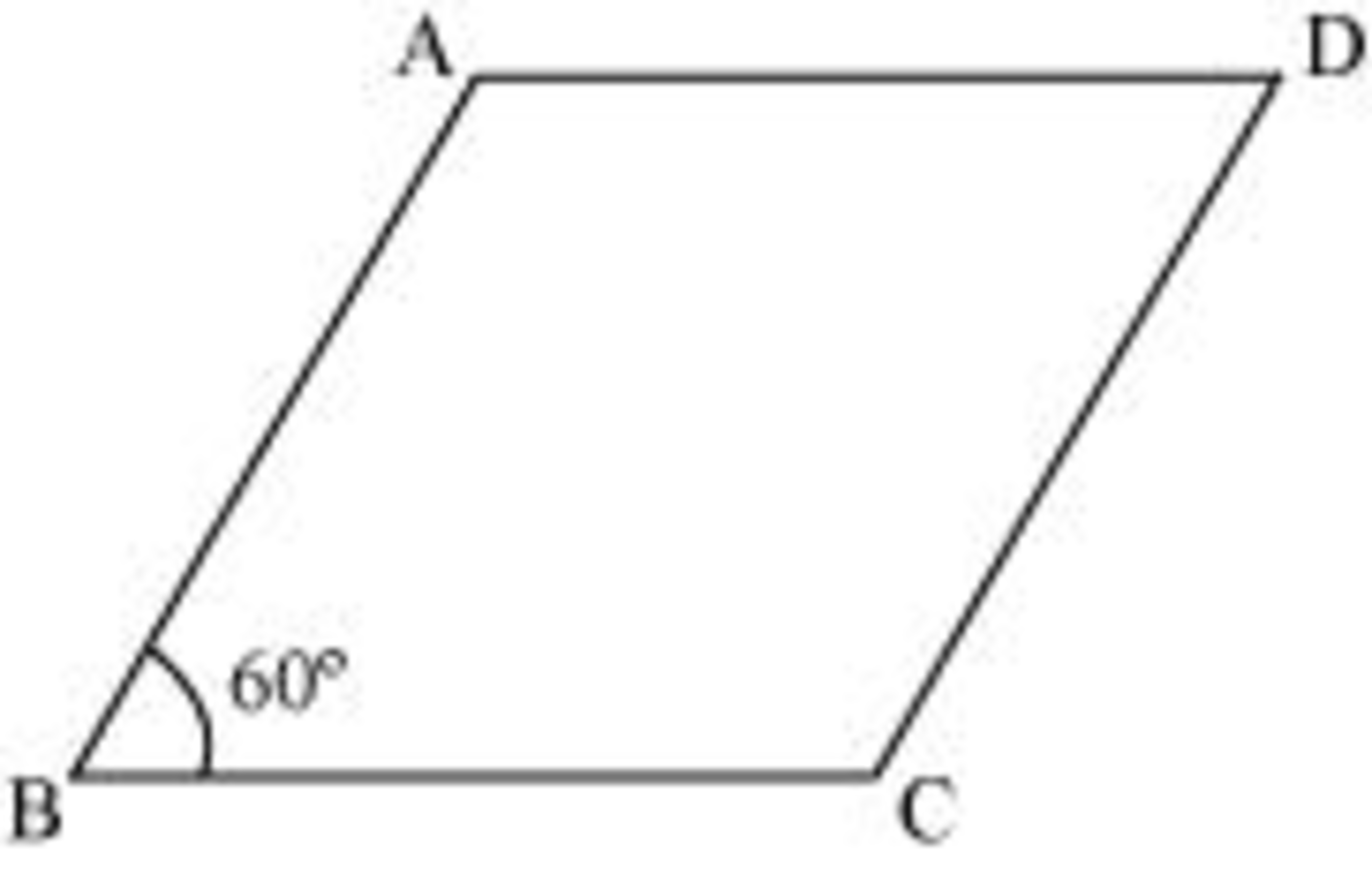Perimeter of rhombus
 The given figure shows a rhombus
A
B
C
D
such that
∠
B
=
6
0
∘
. What is the perimeter of
A
B
C
D
if its area is
8
0
0
3
cm
2
.
The given figure shows a rhombus
A
B
C
D
such that
∠
B
=
6
0
∘
. What is the perimeter of
A
B
C
D
if its area is
8
0
0
3
cm
2
.
The answer is 160.
This section requires Javascript.
You are seeing this because something didn't load right. We suggest you, (a) try
refreshing the page, (b) enabling javascript if it is disabled on your browser and,
finally, (c)
loading the
non-javascript version of this page
. We're sorry about the hassle.
2 solutions
We look at A B and B C not as mere sides of a rhombus but as vectors.
A r e a ( □ A B C D ) = ∣ B A × B C ∣
⇒ 8 0 0 3 = ∣ B A ∣ ⋅ ∣ B C ∣ ⋅ sin ( 6 0 ∘ )
But ∣ B A ∣ = ∣ B C ∣ since, sides of a rhombus are equal. Substituting this, we get:
⇒ ∣ B A ∣ = 4 0
P e r i m e t e r = 4 × ∣ B A ∣ = 1 6 0
Let x be the side length of the rhombus. The area is given by x 2 sin θ where θ is the included angle. So we have
8 0 0 3 = x 2 sin 6 0
8 0 0 3 = x 2 ( 2 3 )
1 6 0 0 = x 2
x = 4 0
Thus, the desired perimeter is 4 × 4 0 = 1 6 0 c m